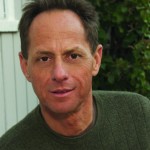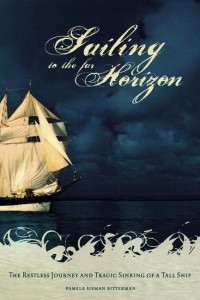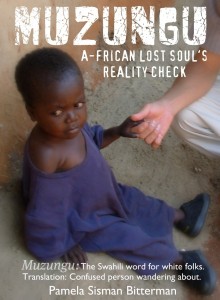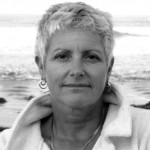Etan Boritzer is the best-selling author of the WHAT IS children’s book series. Find out about his creative process and how he makes his dreams come true.
Visit Etan Boritzer and Bunny Hull on April 30-May 1st at the L.A. Times Book Festival at UCS, Booth #543.
Etan Boritzer is the best-selling author of the What is? series of children’s books on character education and difficult topics. Currently there are 12 books in the series. His books are available in any bookstore in the US, and they are distributed and sold globally wherever English is spoken (UK, Canada, AU, NZ, South Africa, Singapore, etc). To date, Etan’s books have been translated into 13 languages. Etan also teaches yoga and meditation in Los Angeles and guest teaches at various studios around the US.
=============================================================
I write books for children, not children’s books. Important difference, right? Children are smart people, only they are smaller than adults and not as experienced on this plane as adults. Some children though are much smarter than adults. Krishnamurti used to say that the highest form of intelligence is compassion. Most children are compassionate, unless some adult has robbed them early on of their innate goodness. Anyway, when we write for children, why not direct intelligent thoughts to them? That way they can start early to develop the critical thinking skills needed to navigate through the dangerous waters of today’s crazy world.
Rev. Michael Beckwith says that Americans are the most over-entertained, under-educated people in the world. The books I write for children are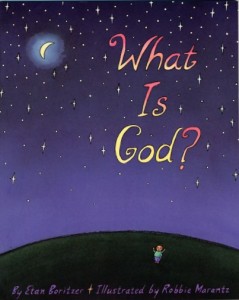 educational but I try to make them entertaining too, particularly with the help of my very creative illustrator Jeff Vernon. I mean, there is nothing wrong with kids being kids, having fun and playing, etc but really, there are a lot of parents living out their missed childhoods through their children, keeping them within a limited intellectual sphere. The average American family buys 5 books a year. Come on, when are we going to really get serious about early childhood education, starting in the home? You parents who are reading this blog are not the average American parents. You buy books or get them from the library, read with the kids before bedtime, you care about your kids’ education. Thanks for being serious.
educational but I try to make them entertaining too, particularly with the help of my very creative illustrator Jeff Vernon. I mean, there is nothing wrong with kids being kids, having fun and playing, etc but really, there are a lot of parents living out their missed childhoods through their children, keeping them within a limited intellectual sphere. The average American family buys 5 books a year. Come on, when are we going to really get serious about early childhood education, starting in the home? You parents who are reading this blog are not the average American parents. You buy books or get them from the library, read with the kids before bedtime, you care about your kids’ education. Thanks for being serious.
Hmmm, the journalist’s 5 W’s… I am talking mostly about why. Why I write the books. All of the above, but also that I am working from Purpose (yes, capital P). I mean, the Purpose of a evolving a wholesome and beautiful earth plane that we find ourselves inhabiting this lifetime. I think we can agree that in order to create Beauty, Generosity, Art, Respect, Peace, Health, etc (all in caps too) within ourselves and our children, and with our global neighbors, the key is knowledge, understanding, insight and other names for education. The Buddha advises us “to know things as they are.” KNOWING! That’s the why, why I write the books, to give children the tools needed to know things as they are.
How do I work? Well, I really don’t want the books to be ‘Etan’s opinions’ or to ‘teach.’ I really try to keep the didacticism or moralizing out of my books. Maria Montessori said, “Don’t teach, allow the child to learn.” She also said “Get out of the child’s way!” So, my books are filled with questions. Sometimes a Mom or teacher will say, “I see a lot of questions. Don’t you give any answers?” OK, sometimes I use the word “maybe” to suggest an answer but I am really more interested in the child and adult engaging in the discussion on the difficult topics I cover and letting the child reason out her own conclusions. Maybe the adult disagrees and a meaningful discussion can ensue.
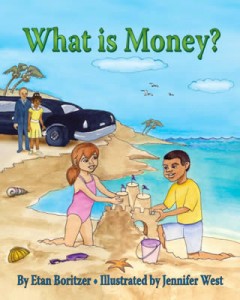 Another part of how I work, I am very receptive to other people suggesting titles for the series, so that these books are not necessarily all my books. For instance, What is Money? was suggested by a Mom I was sitting next to on an airplane pointing to her 8 year old daughter and telling me I should write a book about money because her daughter was completely confused about the concepts of money. What is a Friend? was suggested by a teacher explaining to me the difficulties involved in the early socialization process of children. Our new title What is a Family? was suggested by a friend who is Exec Director of a family counseling center, pointing out all the diverse families in our society today. I mean, why should I hold on to a typical author’s conceit that these are my books. Again, back to the why. Why I write the books is not about me.
Another part of how I work, I am very receptive to other people suggesting titles for the series, so that these books are not necessarily all my books. For instance, What is Money? was suggested by a Mom I was sitting next to on an airplane pointing to her 8 year old daughter and telling me I should write a book about money because her daughter was completely confused about the concepts of money. What is a Friend? was suggested by a teacher explaining to me the difficulties involved in the early socialization process of children. Our new title What is a Family? was suggested by a friend who is Exec Director of a family counseling center, pointing out all the diverse families in our society today. I mean, why should I hold on to a typical author’s conceit that these are my books. Again, back to the why. Why I write the books is not about me.
Once I get started with a title, I do a lot of research. I read through articles and books about let’s say about families; that is, I do anthropological research, historical, contemporary, political, religious research, etc on families. I slop through a few versions of the standard 16 pages of text in each of the books in our series. Then, I have different experts, parents, teachers or child-life professionals in the subject area I am writing review the text, make suggestions as to what I missed with content, edits, even typos. I stopped using a “real” editor a long time ago as this process of editing the books with experts is much more comprehensive. Also, again, these don’t have to be my books. When What is Peace? was released a Mom pointed out a serious conceptual flaw in the text that I had to agree was definitely not right for our kids. In the next printing, I changed the offending wordage. Hey, when you are an independent publisher as I am, you can do that!
I work out the concepts for the illustrations with my illustrator, we go through a few sketches, then a line drawing, then the watercolor painting. I owned an art gallery in a previous lifetime, so I know quite a bit abut art. The paintings sometimes have fun and subtle elements that the kids pick up. The books always have surreptitious messages both visually and conceptually for the adults too.
Oh yeah, another reason why I write the books is that I get to read them to many little kids in schools, libraries and hospitals—all of which is a lot of fun! I get to meet my little readers at book fairs and festivals and to have serious, impromptu discussions with them there also. Writing the books allows me to go to conferences and meet with teachers and principals and to understand kid issues. My only regret in meeting all the nice Moms at the various venues I go to with the books is that their husbands are mostly missing from the educational activities of the children. That should be corrected, Moms!
Sometimes I write the books on the beach in Marina del Rey, CA in front of my house. Sometimes I write them at home or in a café, or on a plane. I am not one of these sensitive writers with a routine who needs a consistent place to sit and write. Actually, it’s better on a writer’s back to stand with your computer say, on a kitchen counter, and not put so much pressure on the lower spine discs sitting for hours on a chair. Anyway, enough about me. Let me just conclude by saying that writing books for kids is a great day job!
To learn more about Etan’s books or make a purchase click here to visit Amazon or www.veronicalanebooks.com.

